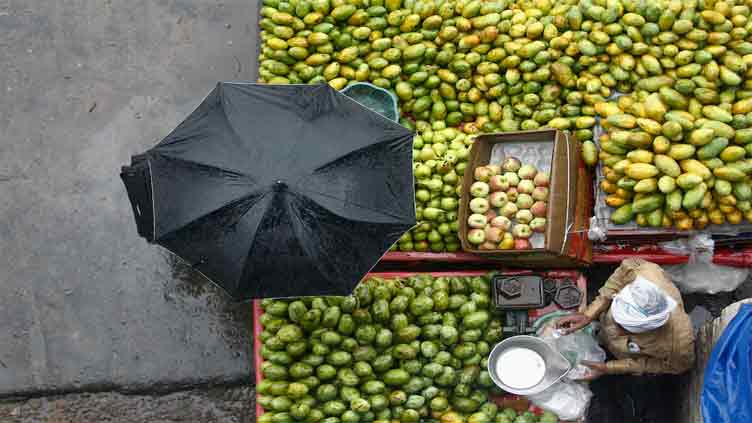India monsoon rains expected to be above average in a boost for agriculture

Business
Season critical for Asia’s third largest economy, which delivers 70pc of annual precipitation
- Pakistan Meteorological Department has earlier made a similar forecast for the country
- Maximum departure expected in central and northern Punjab as well as southern Sindh
MUMBAI/NEW DELHI/LAHORE (Web Desk/Reuters) – India is likely to receive above-average monsoon rains this year, the weather office said on Monday, retaining its April forecast and keeping alive the possibility of higher farm output and economic growth in Asia's third-biggest economy, Reuters says.
This year's monsoon rains are expected to be 106 per cent of the long-term average, Mrutyunjay Mohapatra, director-general of the India Meteorological Department (IMD) told a virtual news conference.
The IMD defines average or normal rainfall as between 96pc and 104pc of a 50-year average of 87 cm (35 inches) for the four-month season beginning June, Reuters added.
PAKISTAN MONSOON
Meanwhile, this report is consistent with the forecast made by the Pakistan Meteorological Department (PMD), which had earlier shared a similar forecast.
“As per seasonal outlook normal to above-normal rainfall is expected in most parts of the country, with maximum departure over central to northern Punjab and southern Sindh.”
Read more: Pakistan heatwave pushes temperatures to 52 C, westerly to hit upper areas
“Northern Khyber Pakhtunkhwa and Gilgit Baltistan may get nearly normal rainfall whereas most parts of Balochistan may get slightly above normal rainfall during the season JJA 2024. Moreover, the second half of the season is expected to be wetter than the first half,” it had added.
At the same time, the PMD says the daytime maximum temperature is expected to be nearly normal, however, northern Khyber Pakhtunkhwa and Gilgit-Baltistan may experience warmer than normal maximum temperature during the season.
“Nighttime temperatures are likely to exceed normal levels across most regions of the country, with marked deviation anticipated over northern Khyber Pakhtunkhwa, Gilgit-Baltistan and south-western Balochistan.”
CRITICAL FOR ECONOMY
Reuters notes that the monsoon, critical for India's nearly $3.5 trillion economy, delivers almost 70pc of the rain needed to water crops and replenish reservoirs and aquifers.
Read more: Rising temperatures, erratic rains, less snow. Agriculture must adapt to the changing elements
Nearly half of India's farmland, without any irrigation, depends on the June-September rains to grow a number of crops such as rice, corn, cotton, soybeans and sugarcane.
Plentiful rains could lift Indian farm output and wider economic growth, helping to bring down food price inflation [food prices], which has remained above the central bank's comfort level in recent months and prompted it to resist cutting Indian interest rates.
Mohapatra said the La Nina weather phenomenon, which increases rainfall in India, would set in during July and September, boosting rainfall across the country.
India's rice and rubber growing states in the south, and soybean, pulse, cotton and sugarcane growing central states, are likely to receive above-average monsoon rains during the season, Mohapatra said.
Key rice-growing states in the northeast could receive below-average rains, he said.
Below-average rains in 2023 depleted reservoir levels and hit food production. The government responded by imposing curbs on exports of sugar, rice, onions, and wheat.
Resuming exports depends on how quickly production recovers in 2024, which is not possible without good monsoon rainfall.
India is the world's second-biggest producer of wheat, rice, and sugar, and the biggest importer of palm oil, soyoil, and sunflower oil.
The monsoon is forecast to hit the Kerala coast in the southwest on May 31.
India is likely to receive average rains in June, although maximum temperatures in the month are likely to remain above normal, Mohapatra said.
The north-western parts of the country could see heatwave conditions for four to six days in June, compared with the normal three heatwave days, he said.


